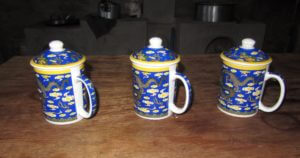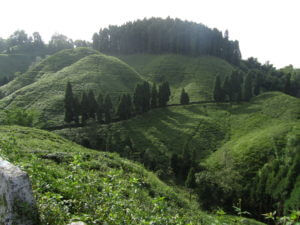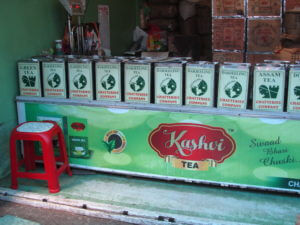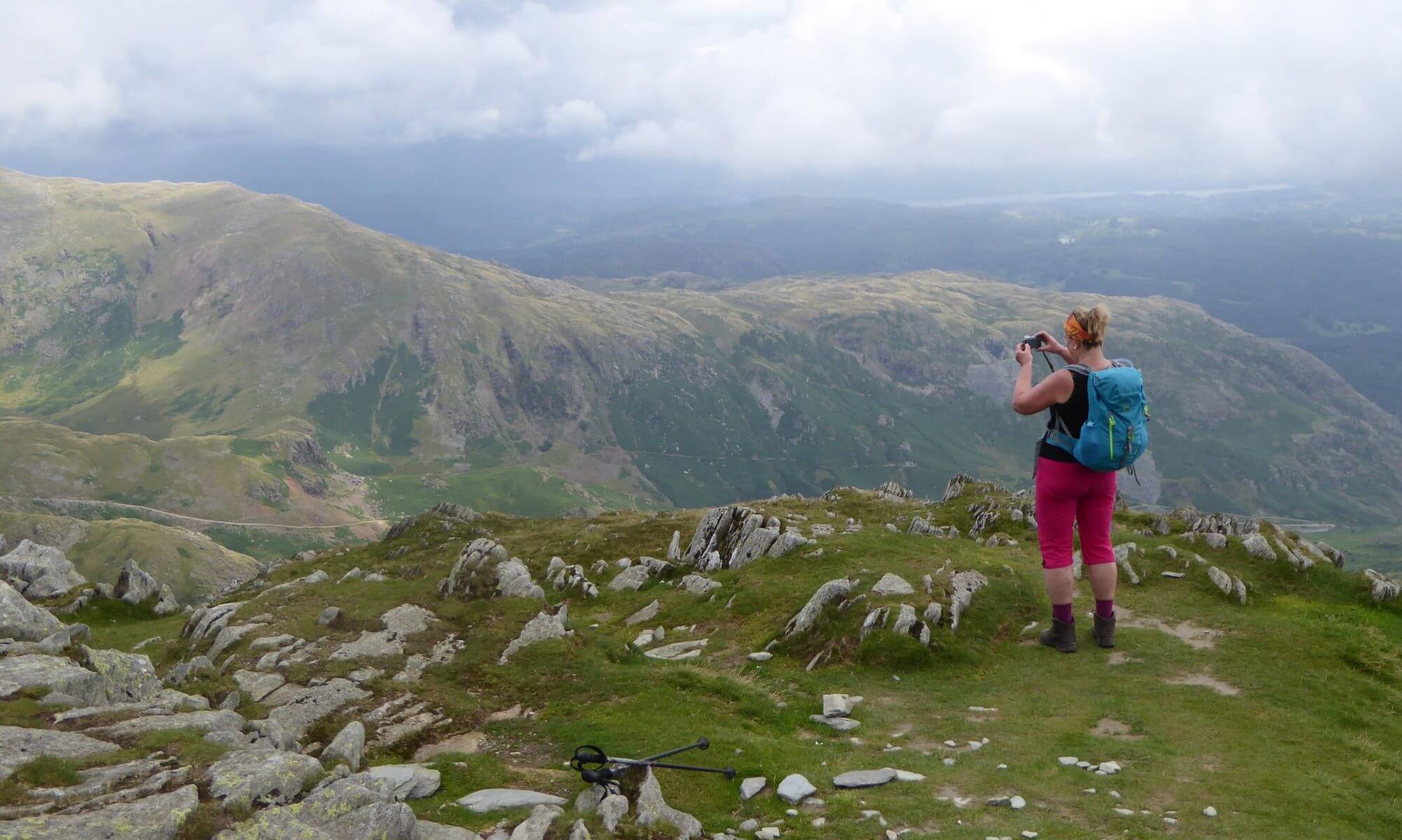Having taken a considerable amount of effort to get to Darjeeling District it would be remiss not to talk about tea.
 The first cup of tea that I drank in India was masala chai. It was not to my taste as it is made as a sweet, milky drink with tea and selected spices such as cardamom, cloves, star anise, fennel, nutmeg and fresh ginger. It is particularly popular during the monsoon season and winter as it is believed to keep you warm and to help break up catarrh! That may be the case but it is not for me.
The first cup of tea that I drank in India was masala chai. It was not to my taste as it is made as a sweet, milky drink with tea and selected spices such as cardamom, cloves, star anise, fennel, nutmeg and fresh ginger. It is particularly popular during the monsoon season and winter as it is believed to keep you warm and to help break up catarrh! That may be the case but it is not for me.
 The tea gardens of Darjeeling are a beautiful sight although there is no activity in the plantations at the moment. The two-month-old strike in the area has meant that for the first time in its history there has been no plucking of the valuable “second flush” Darjeeling tea which is usually harvested in June. This will have severe economic effects in the area as the second flush tea enjoys a global reputation and prices can reach as high as 540 GBP per kilo. I think we may see tea prices increasing if the strike continues for much longer.
The tea gardens of Darjeeling are a beautiful sight although there is no activity in the plantations at the moment. The two-month-old strike in the area has meant that for the first time in its history there has been no plucking of the valuable “second flush” Darjeeling tea which is usually harvested in June. This will have severe economic effects in the area as the second flush tea enjoys a global reputation and prices can reach as high as 540 GBP per kilo. I think we may see tea prices increasing if the strike continues for much longer.
 The tea plant Camelia sinensis was introduced by the British in the 1840s in an attempt to break the Chinese monopoly on the tea trade. They used Chinese seeds and methods in both Darjeeling and Assam. Tea can only be described as “Darjeeling Tea” if it has been grown in designated tea gardens and the Tea Board of India has launched the certification mark and logo of “The Darjeeling Tea Association” as shown in the picture, which is similar to the protected designation of origin used in the EU for products such as cheese and champagne.
The tea plant Camelia sinensis was introduced by the British in the 1840s in an attempt to break the Chinese monopoly on the tea trade. They used Chinese seeds and methods in both Darjeeling and Assam. Tea can only be described as “Darjeeling Tea” if it has been grown in designated tea gardens and the Tea Board of India has launched the certification mark and logo of “The Darjeeling Tea Association” as shown in the picture, which is similar to the protected designation of origin used in the EU for products such as cheese and champagne.
Tea shops abound in Siliguri where I am staying at the moment and it is very interesting to see how the market in organic, green, white and herbal teas is developing.
©Copyright overthehils.com 2017

